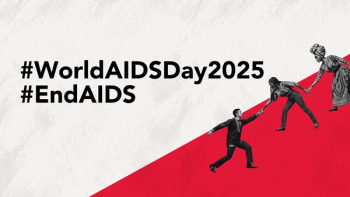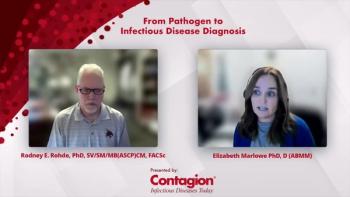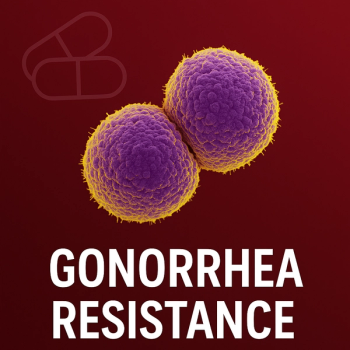
Burden of HIV in the USA and Associated Symptoms
Segment Description: Experts in infectious diseases provide an overview of the current HIV burden in the country and the potential signs and symptoms of acute HIV infections.
Interview Transcript (modified slightly for readability):
Joseph Eron, MD: I am Joseph Eron, MD. I’m a professor of medicine in the Division of Infectious Diseases at the University of North Carolina, Chapel Hill School of Medicine, which is in Chapel Hill, North Carolina.
The treatment of HIV has a long history. The life expectancy of a person with HIV nears that of a person not living with HIV. Yet challenges remain regarding therapy, including tolerability, long-term adverse effects, and drug-drug interaction. In this Contagion® Peer Exchange® panel discussion, we will discuss this epidemic with specialists who are experts in managing and understanding HIV infections. We will review available HIV treatments, emerging agents, and novel management approaches.
I am joined by Dr. Allison L. Agwu, an associate professor of pediatric and adult infectious diseases at John Hopkins University School of Medicine in Baltimore, Maryland; Dr. Ian Frank, a professor of medicine at the University of Pennsylvania Perelman School of Medicine in Philadelphia, Pennsylvania; Dr. Colleen Kelley, an associate professor of medicine in the Division of Infectious Diseases at Emory University School of Medicine in Atlanta, Georgia; and Dr. Julia Marcus, an infectious disease epidemiologist and an assistant professor in the Department of Population Medicine at Harvard Medical School and Harvard Pilgrim Health Care Institute in Boston, Massachusetts.
Let’s begin by talking about the kind of HIV incidence and prevalence. Julia, where are we in the United States?
Julia Marcus, MD, MPH: The CDC estimates that there are 1.1 million people living with HIV in the United States. In terms of incidence, there are nearly 40,000 new HIV infections each year, and that has basically plateaued since about 2013.
Joseph Eron, MD: Yes, the cases are going down, right? And new incidences are becoming flat.
Julia Marcus, MD, MPH: Pretty flat. There are some groups in which incidences are decreasing, but 70% of the new infections are among men who have sex with men. Within that group HIV rates are declining in white men who have sex with men, but not so much in other groups. And there are increases in some groups, like in Latino MSM (men who have sex with men).
Joseph Eron, MD: Yes, it seems that with women, for example, we’re actually seeing a decline. Is that right?
Julia Marcus, MD, MPH: I think so, and I believe there are differences by age. There are increases in the youngest age groups and either flat lining or declines in other groups.
Allison L. Agwu, MD, ScM: Unfortunately, the young people seem to account for about 25% of new infections. Overall we’re not really making a dent in that.
Joseph Eron, MD: It’s different in different parts of the country, and where we live it’s a little different. Right, Colleen?
Colleen Kelley, MD, MPH: Yes, the Southeastern United States is really where the epidemic has shifted over the last decade. This is where we are still seeing very high rates of HIV incidence and prevalence. Most notably in urban and rural areas, which could be communities of color and or poverty.
Ian Frank, MD: Just to emphasize that point, the CDC has divided the country into 4 regions: South, Northeast, Midwest, and West Coast. Interestingly, there are as many infections in the South as all the other regions combined. There happen to be many sociological and political reasons for that. It’s really important for us to be aware of and to consider making public health decisions in this country.
Colleen Kelley, MD, MPH: Absolutely.
Joseph Eron, MD: When we’re thinking about people who have HIV with an acute infection, what are we looking for when they present?
Allison L. Agwu, MD, ScM: What I think is interesting is that probably about 50% of people or more, when you talk to them after they’ve been diagnosed, you ask them, “Did you have the flu, or something weird, back in July?” And they’ll say, “Oh, yeah, I remember I got this flu-like illness.” They could present with fever, chills, muscle aches, and rashes. They present with the “flu,” but it’s a viral illness, and it’s the acute presentation of HIV. Oftentimes they seek medical care and are treated for the flu, right? Or they’re sent home with symptomatic management, and that’s when they actually could have been tested and diagnosed with HIV. In these cases, it’s an opportunity and important for us to recognize that people can present like that. Many people have no symptoms, and this contingent needs to be educated to become engaged in care.
Joseph Eron, MD: In North Carolina, 10 years ago we had our acute HIV infection project, and the most common first diagnosis was Rocky Mountain spotted fever. It’s an issue because it’s an opportunity to test to prevent transmission.
Allison L. Agwu, MD, ScM: I oftentimes say, you know when you have the flu, we all look for a little TLC. People have flu sex. It’s a perfect opportunity to transmit because our viral load is very high at that time and at that point. If we identify the infection, we can actually intervene and potentially prevent additional infections.
Joseph Eron, MD: Ian, are you still seeing acute infections in Philadelphia?
Ian Frank, MD: I would say we’re seeing more acute infections in Philadelphia than we have historically, and maybe it’s because we have better methodologies to identify individuals coming into the emergency department [ED] as having acute HIV. We’re doing some rapid testing and having our ED physicians do viral load testing in people who are at risk for HIV acquisition. So I think we’ve helped our ED faculty become a little more sensitive to that diagnosis, and we’re seeing about 1 new infection a month.
Joseph Eron, MD: Allison, how are patients presenting in your practice? What is involved?
Allison L. Agwu, MD, ScM: I see both adults and pediatrics, so I treat the range. I commonly treat people who are detected because somebody has already diagnosed them. These patients are asymptomatic and are already in that stage of infection where they’re not acute, but they’re not at end-stage HIV. These patients may have just gotten a test, part of Job Corps or part of some regular screening, which is why screening is so important.
And when you ask them, they may have had some sore lymph nodes or mention, “Oh, I just haven’t felt great. I’ve had these rashes. I felt tired.” Women may talk about yeast infections that they may have been having. Just sort of nonspecific things a lot of them may be having. Some night sweats. A lot of times they get asymptomatic, which is why it’s so important to test people. I mean, as people progress with more immunosuppression, they may have opportunities of infections and present that way. Unfortunately, we still do see quite a few number of people who present at the end, where their CD4 is lower than 200, or they may have pneumocystis pneumonia. They may have streptococcus, and we happen to see that again. There are some deficits in our health care system, where the system is not engaged. So we really do see the range.
Joseph Eron, MD: Lots of times there are missed opportunities to test those patients, right?
Colleen Kelley, MD, MPH: Yes, I think any time you look at someone who’s diagnosed late in the course of their infection and you look back, you’ll often see that they touched the health care system multiple times. Then there were missed opportunities for diagnosis where we could have intervened early on and preserved their health, as well as reduce their risk of transmission to partners.
Newsletter
Stay ahead of emerging infectious disease threats with expert insights and breaking research. Subscribe now to get updates delivered straight to your inbox.



















































































































































































































































































